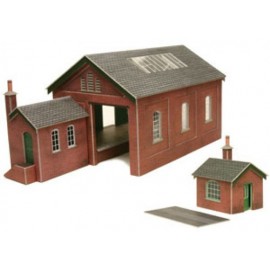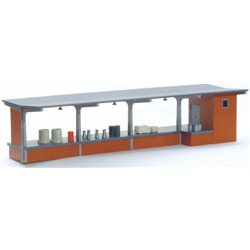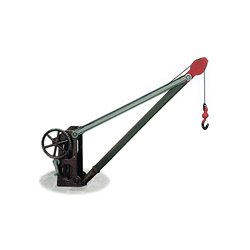There are a number of different options for attaching figures such as a horse and rider to a layout. Perhaps the...
No products
Product successfully added to your shopping cart
There are 0 items in your cart. There is 1 item in your cart.
Search Tips
How do I model industries on my layout?
One of the most rewarding aspects of building a model railway is creating a realistic, living world in miniature. While laying track, wiring, and running trains is immensely satisfying, adding interactive industries and operational scenes can truly bring your layout to life. Modelling industries not only enhances the visual appeal but allows you to simulate real-world rail operations, making your layout a dynamic, ever-changing diorama.
To begin, research the types of industries that would have been served by rail in your chosen era and region. Common examples include coal mines, quarries, factories, warehouses, timber yards and goods depots. Study photographs and documentation to understand the typical structures, rolling stock, and operations associated with each industry.
When planning your industrial area's location, consider accessibility and sightlines. Situate it along a switched siding or tight-to-the-mainline branch for easy shunting movements. Use cameo cuts, duck-unders or removable segments to allow reach for coupling and uncoupling.
Construct your industrial structures from kits, scratch building or a mixture of both techniques. Add realistic details like weathering, signage, vehicles, and miniature workers to set the scene. Loads of coal, crates, barrels, and raw materials can be modelled from household items and modest scratchbuilding.
Once your structures are complete, incorporate operational possibilities by including rail-served loading docks, crane trackage, machinery to load and unload, and a mock run-around or cabmobility area. Design switching challenges like tight curvature, trapped or redundant spurs and interference from across-the-road obstacles.
Finally, devise operating sequences for your industrial area. Per the prototype, schedule arrivals and departures of commodities, maintenance of way activities, crew changes, and more. Develop a pool of civic workers, from section gangs to yardmasters, each with unique duties. Card-operating systems simulate real-world switch lists and timetables.
With diligent planning and execution, your model railway can accurately depict the symbiotic relationship between rails and industry. Operations bring the layout alive while double-heading switching maneuvers prove as engaging as watching a timefreight race across the main. Most importantly, modelling industries allows your skills as a railroader and storyteller to shine.
Click here to receive the tips weekly in your mailbox. You can unsubscribe at any time.










